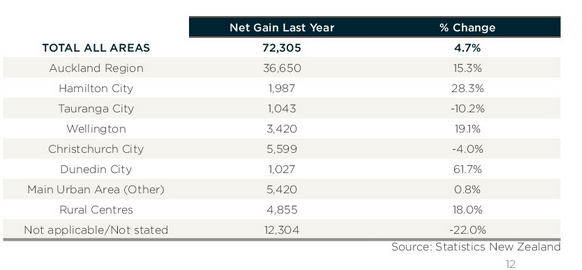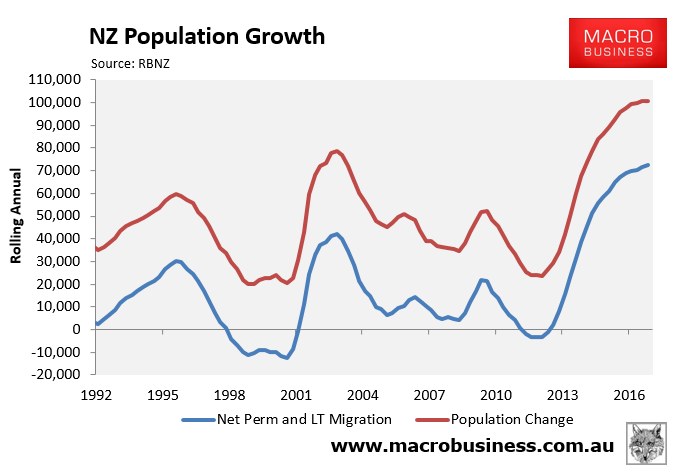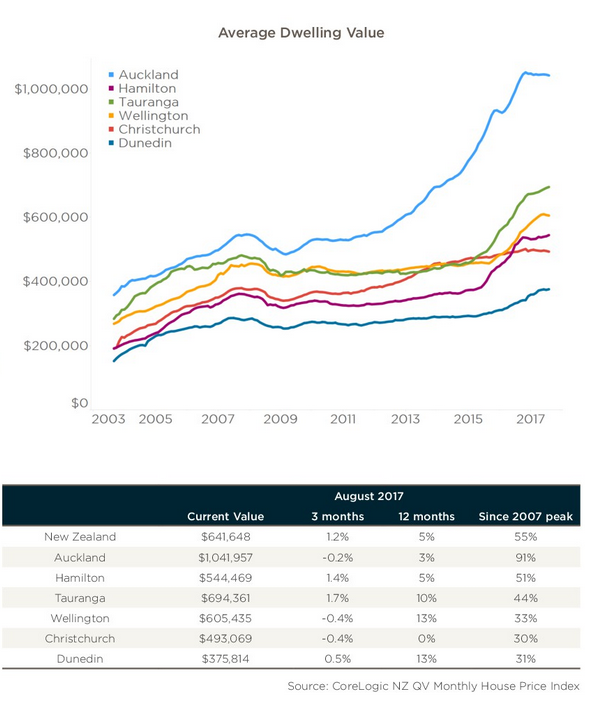I have written many times how New Zealand’s National Government has failed dismally in tackling Auckland’s housing crisis, despite promising to do so over its nine year reign.
Yesterday, we received more evidence of the National Government’s failure, with its Auckland Housing Accord – designed to deliver tens-of-thousands of ‘affordable’ homes – delivering only a small fraction of that. From Stuff.co.nz:
Measures to improve Auckland’s supply of affordable housing have been described as a “dismal failure”.
Auckland Council’s Planning Committee on Tuesday received an update on the provision of affordable housing in the city’s special housing areas.
A report to the committee revealed that fewer than 100 “affordable” houses destined for the free market were built under the Auckland Housing Accord, which ran for three-and-a-half years from 2013, in conjunction with central government.
It had a target of 39,000 new sites and dwellings to be consented across Auckland.
Council data shows there were 3157 houses completed in the special housing areas, of which just 580 were classified as affordable.
Of those, 482 were “retained affordable”, largely destined to be social housing.
Just 98 were available for sale to the wider public, 30 of which were in Hobsonville Point.
Over the period the accord was in place, the Auckland median house price rose from $530,345 to sit at $817,119 now, the committee was told.
Councillor Chris Darby, who chairs the Planning Committee, told media the initiative had failed on its aim to deliver affordable housing.
Property market analyst Rodney Dickens said the average section price in Auckland had doubled since 2013, too…
He said, in most cases the special housing areas were going to be developed, anyway.
“Increasing supply doesn’t impact on price if you don’t change the cost of production … there’s something fundamentally rotten in Auckland and Hamilton and Tauranga now have got the same disease.”
He said, had the initiative been successful in keeping a lid on section prices, the city’s property market could look quite different…
“If the Auckland section price was still what it was in 2013 the average house price would be over $200,000 less.”
Available tracts of land were in the hands of too few people, he said, which allowed an element of price setting.
Meanwhile, following Statistics New Zealand’s latest population projections, which projected rapid growth on the back of strong immigration from Asian nations, The AM Show host and housing advocate, Duncan Garner, has penned an article questioning the merits of New Zealand’s mass immigration policy. Also from Stuff.co.nz:
I went to Kmart on Wednesday to buy some new underpants and socks…
Now, normally this outing to the mall wouldn’t be a big deal but this one fast became a nightmarish glimpse into our future if we stuff it up.
As I started walking towards the self-pay counter I saw a massive human snake crawling its way around the self-service island near the middle of the store. And it snaked and snaked and snaked. The snake was massive.
I wondered what the attraction was? It wasn’t immediately obvious. Then it was. The self-service counter couldn’t cope.
It couldn’t cope with the pressures of the people. The dozens of stressed faces making up the human snake were frustrated too.
I looked around, it could have been anywhere in South East Asia.
I wasn’t shocked – we have reported this for three years – we have targeted immigrants, opened the gates and let in record numbers. This year’s net gain of migrants was 72,000.
Indians, Pakistanis, Sri Lankans, Syrians, and many others. I saw the changing face of New Zealand at the crossroads, otherwise known as Kmart’s self-service counter. Every four minutes and 51 seconds New Zealand’s population grows by another person. We are growing faster now than compared to any other time in our history. And faster than most countries in the world.
New Zealand’s population grew by 100,400 to the June 2017 year.
This is not an opinion column designed to be deliberately inflammatory on race grounds, flimsy grounds or any other grounds.
But do we have any idea what we’re doing here? No.Predictions show we will have 6.3 million people by 2038. There’ll be more Asians than Maori. Is anyone leading this debate on how big we should be? No.
Does it matter? You bet it does.
Get this wrong and New Zealand could be an international cot case of broken cities, poor planning, congested highways and stolen dreams.
And we will have no one to blame but ourselves.
Immigration is great, but I’m not sure our traditional standard of living is enhanced by it.
Wages have been flat, that helps no one but business owners.
House prices meanwhile have rocketed and the home ownership dream is dead for many. And buried. Forever…
Do we have a Minister of Population and Planning? Of course not. The incoming prime minister should make this a priority. It should be a senior job…
Until now we’ve had the world gate-crash our party. But now it is time to make it work for us.
Let’s design our country to make it better for us. Bring in the people by all means but send them to where we need them. Let’s not give them what they need from us so easily.
People are lining up to come here because we are the last paradise on Earth.
Our small population is our winning card. Let’s not lose that.
Everything we do we must ask ourselves this question: Will this make our country better for those living in it now?
If the answer is no then we must pause, stop and think again. Your great-grandchildren will be so grateful. And it’s our legacy.
Duncan Garner has nailed it. Auckland’s housing and infrastructure woes have come about primarily because of the National Government’s obsession with mass immigration and growth.
72,305 net migrants landed in New Zealand over the past year (36,650 in Auckland):

Driving a record population gain nationally of 100,500 people (circa 45,000 in Auckland):

Infrastructure, housing supply, services – none of it has been able to keep up. And the result has been a rapid escalation of Auckland dwelling values since 2013 (when immigration rocketed):

These very same problems are being felt in Sydney and Melbourne, where similar issues are in play. And they are robbing youth in both nations’ cities of a housing future.

